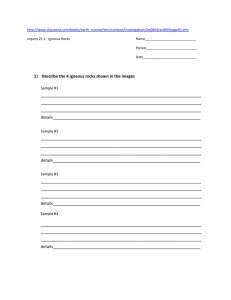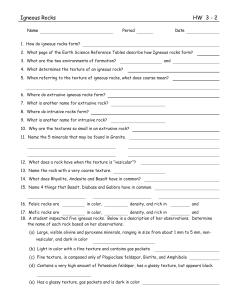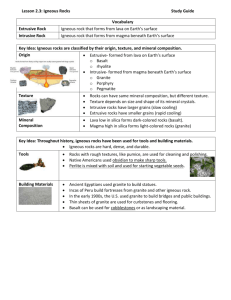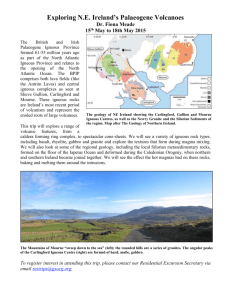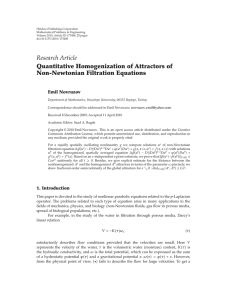Introducing Igneous Rocks AS - Earth Science Teachers` Association
advertisement
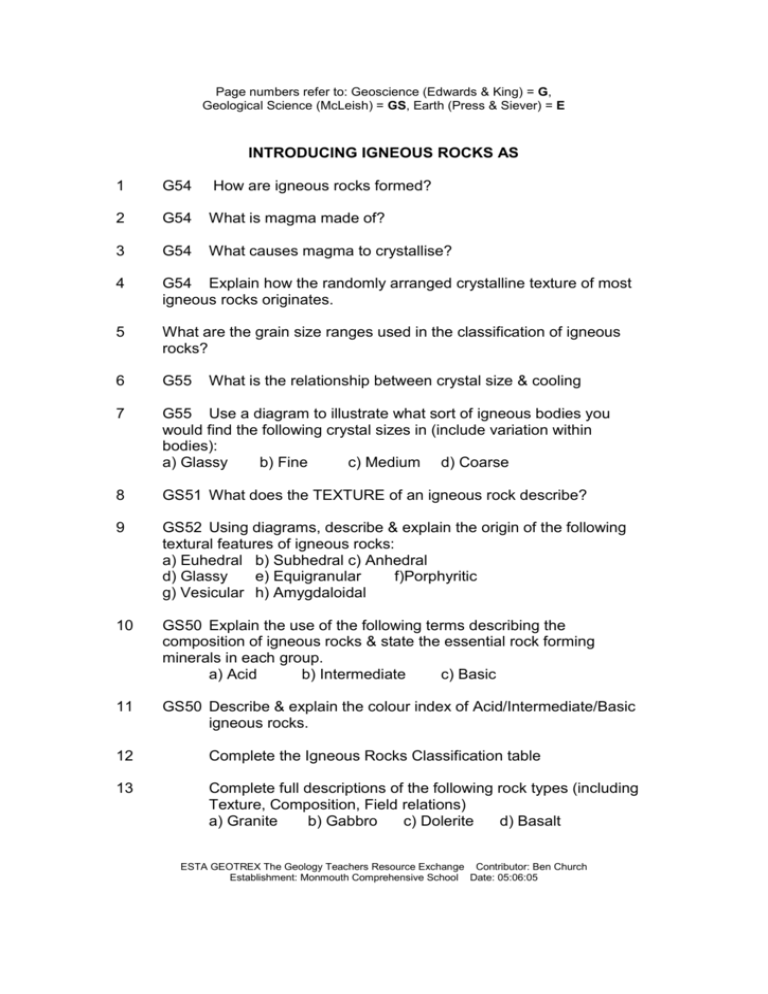
Page numbers refer to: Geoscience (Edwards & King) = G, Geological Science (McLeish) = GS, Earth (Press & Siever) = E INTRODUCING IGNEOUS ROCKS AS 1 G54 How are igneous rocks formed? 2 G54 What is magma made of? 3 G54 What causes magma to crystallise? 4 G54 Explain how the randomly arranged crystalline texture of most igneous rocks originates. 5 What are the grain size ranges used in the classification of igneous rocks? 6 G55 7 G55 Use a diagram to illustrate what sort of igneous bodies you would find the following crystal sizes in (include variation within bodies): a) Glassy b) Fine c) Medium d) Coarse 8 GS51 What does the TEXTURE of an igneous rock describe? 9 GS52 Using diagrams, describe & explain the origin of the following textural features of igneous rocks: a) Euhedral b) Subhedral c) Anhedral d) Glassy e) Equigranular f)Porphyritic g) Vesicular h) Amygdaloidal 10 GS50 Explain the use of the following terms describing the composition of igneous rocks & state the essential rock forming minerals in each group. a) Acid b) Intermediate c) Basic 11 GS50 Describe & explain the colour index of Acid/Intermediate/Basic igneous rocks. What is the relationship between crystal size & cooling 12 Complete the Igneous Rocks Classification table 13 Complete full descriptions of the following rock types (including Texture, Composition, Field relations) a) Granite b) Gabbro c) Dolerite d) Basalt ESTA GEOTREX The Geology Teachers Resource Exchange Contributor: Ben Church Establishment: Monmouth Comprehensive School Date: 05:06:05
